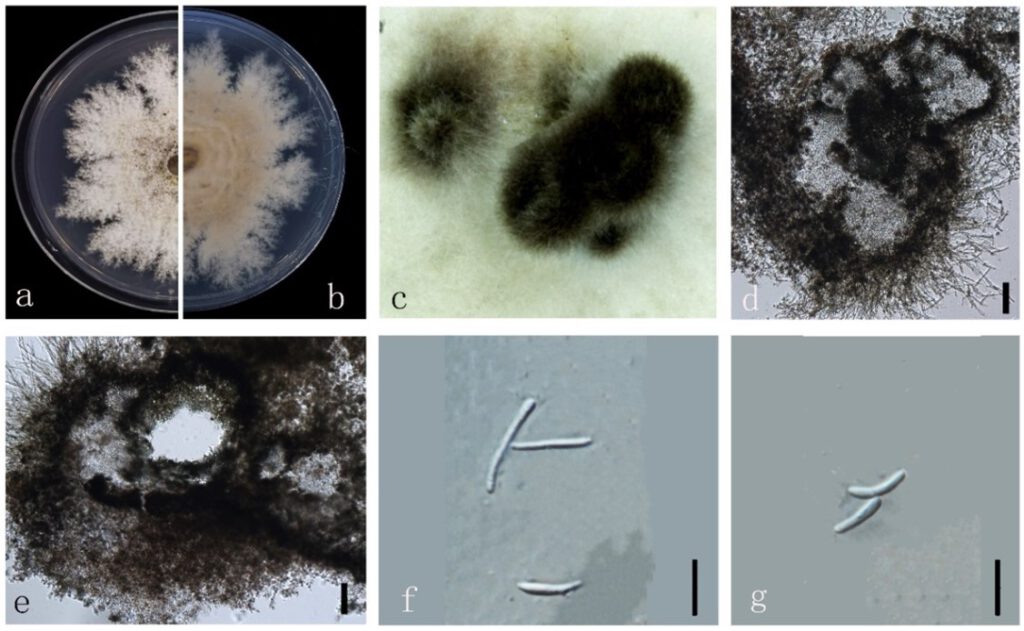Diaporthe zhaoqingensis M. Luo, M. P. Zhao, W. Guo, Manawas., K. D. Hyde & C. P. You, sp. nov. (Figure 15)
MycoBank number: MB; Index Fungorum number: IF; Facesoffungi: FoF 11357;
Etymology: In reference to the Zhaoqing city, Guangdong provice, from where the samples were collected.
Holotype: ZHKUCC 22-0039
Endophytic on Morinda officinalis root and stem. Sexual morph: not observed. Asexual morph: Pycnidia 200–1000 × 170–1000 μm (`x = 574 ± 272 × 520 ± 277 μm), subglobose, flask or irregularly shaped, single or multiple cavities. Pycnidial wall consisting of sevea layers of medium transparent textura globosa-angularis. Conidiophores hyaline, unbranched, densely aggregated, cylindrical-filiform, straight to sinuous. Conidiogenus cells phialidic, cylindrical, terminal and lateral, with slight taper towards apex. Gamma conidia 10–30 × 0.5–2 μm (`x =15 ± 4 μm× 2 ± 0.5 μm), fusiform, hyaline. Alpha and Beta conidia not observed.
Culture characteristics: Colonies on PDA reach 50 mm diam. after 7 days. White cotton flocculent aerial mycelium in the center, surrounding sparse hyphae, with lobate margin. First white, then turn to grey and yellow grey.
Material examined: China, Guangdong Province, Zhaoqing, isolated from healthy stem and root of Morinda officinalis. June 2020, W. Guo, dried culture ZHKU 22-0039, and living culture ZHKUCC 22-0039 and 22-0040 ex-type.
Habitat and host: Healthy stem and root of Morinda officinalis.
Known distribution: China (Zhaoqing, Guangdong Province).

Figure 15. Diaporthe zhaoqingensis (ZHKUCC 22-0056) (a) upper view of colonies on PDA; (b) Reverse view of colonies on PDA; (c) Pycnidia with conidial droplets on PDA; (d,e) Pycnidium; (f–h) gamma conidia; Scale bars: (d,e) =100 µm; (f–h) =10 µm.
